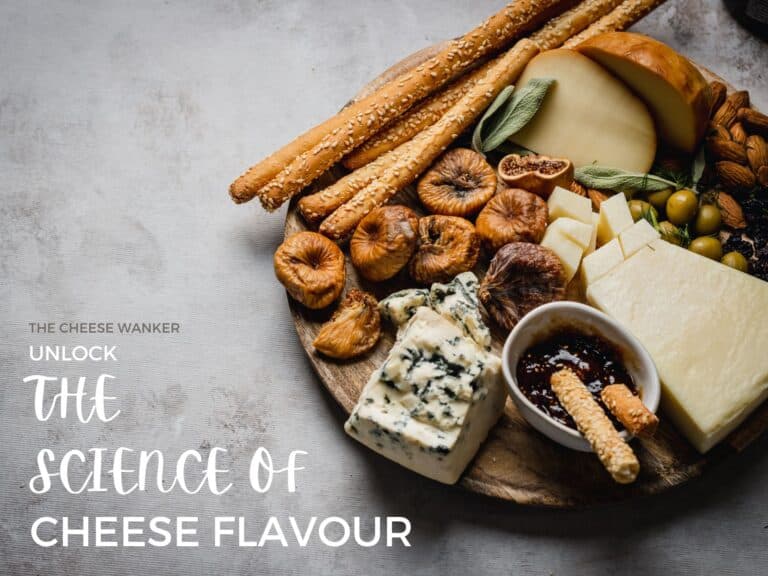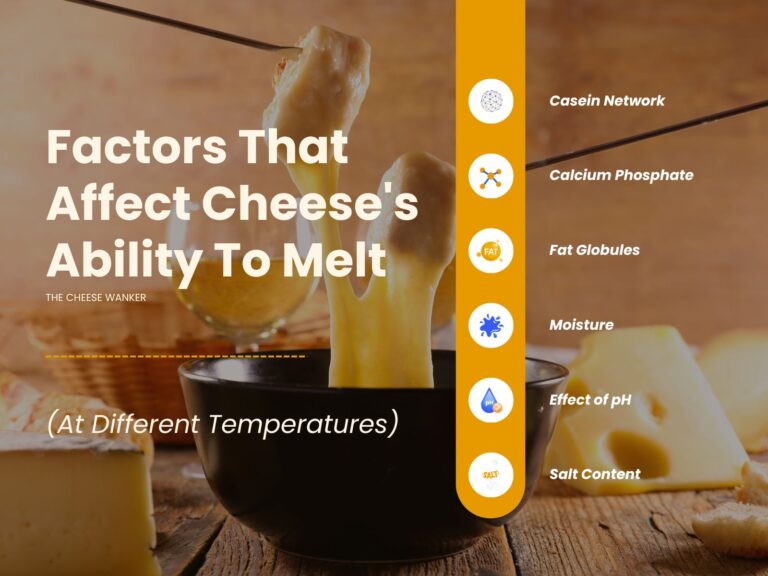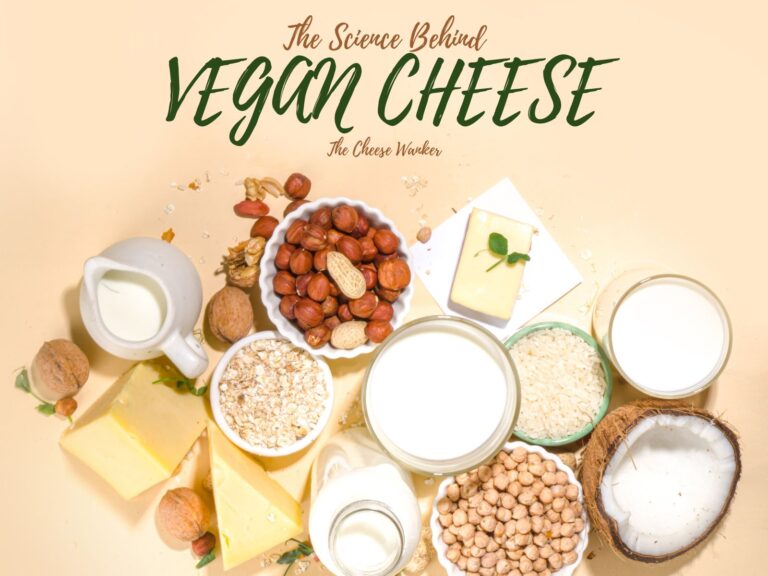If you’ve never tasted cheese made with goat’s milk before, you’re in for quite the treat. But, what does goat cheese taste like? Well, there is no short answer to this question. Because it would be like asking, “what does cow’s milk cheese taste like?” or “what does red wine taste like?”. Read on to learn more.
SEE ALSO: Why is there a line of ash in my goat’s cheese? →
Factors that affect the taste of goat cheese
There are an incredible range of cheeses that can be made with goat’s milk and, to be honest, they all taste quite different.
Depending on the breed of goat, the geographical location, the culture used and the maturation method, the type of goat cheese you end up with will have completely different characteristics.
The science behind goat cheese’s flavour
Before we explore the many different types of goat’s milk cheeses, let’s take a little nerdy detour. On a molecular level, goat’s milk is actually quite a bit different to cow’s milk. More specifically, the fatty acid content varies quite significantly.
The fatty acids in goat’s milk
Some of the fatty acids that are present in goat’s milk include 4-ethyl octanoic acid, 4-methyl octanoic acid, caproic acid, and caprylic acid. Fun fact about the last two: their names are derived from the latin word for goat, capra.
As a matter of fact, the fatty acid profile is the main reason behind that characteristic tangy and animalic aroma and flavour that most goat cheeses exhibit.
Next, let’s have a look at the different types of goat’s milk cheeses.
Different types of goat cheese
Because there are so many different types of cheeses made using goat’s milk, let’s break them down by maturation period. Overall, this categorisation will help us group some cheeses with similar characteristics.
Fresh goat cheese (rindless)
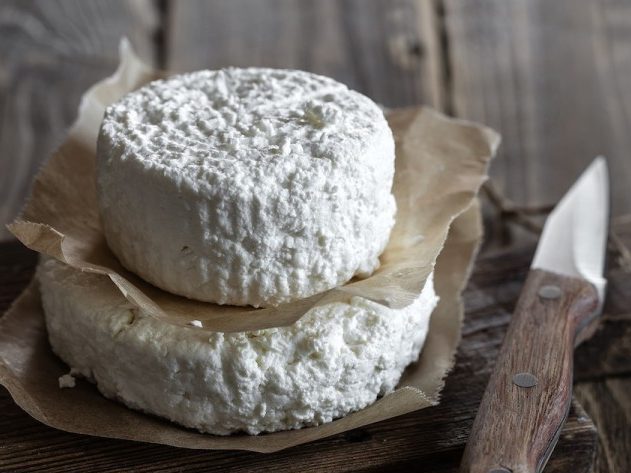
E.g. Boursin, Fresh Chèvre, Brousse du Rove
Chèvre is a French word that translates to both “female goat” and cheese that is made using goat’s milk. Fresh chèvre is a very popular unripened soft cheese in both France and around the world. It is typically pristine white and rindless and has a very spreadable texture.
Moreover, this type of cheese is usually consumed within 2 to 3 days of production and exhibits qualities that are the most closely related to the milk it is made with.
So, if you are looking for that “goaty” tang, this is the best cheese to try. Watch out also for the lactic (milky) and citric (zesty) flavour notes.
Brined goat cheese (rindless)
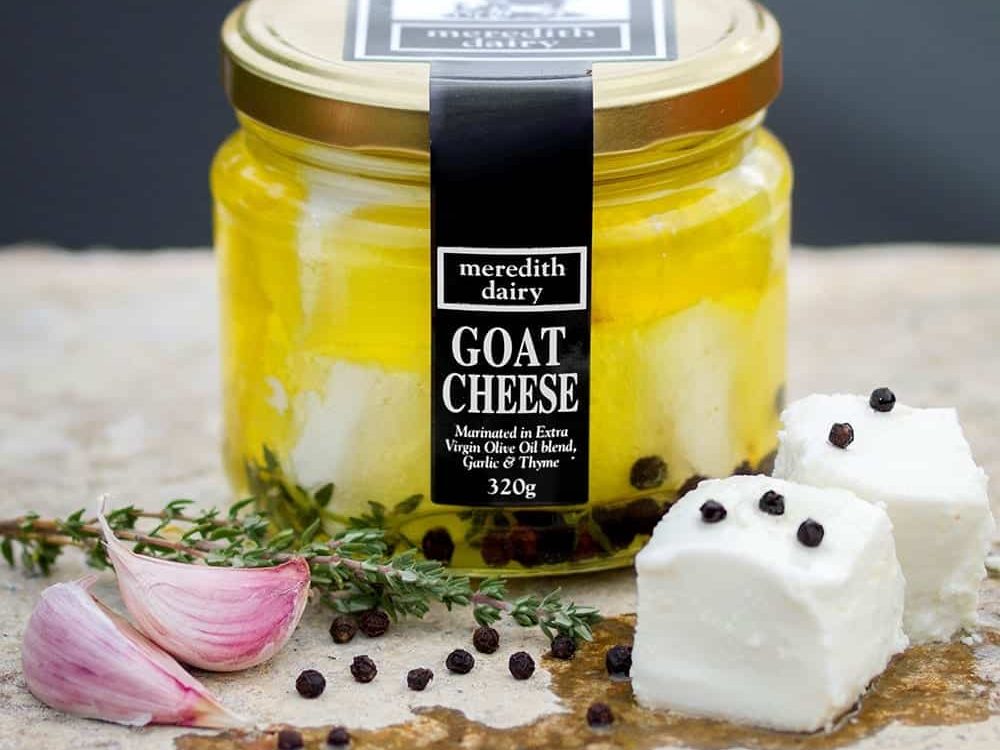
E.g. Feta, Akkawi, Halloumi
Brined cheeses find their origins in Ancient Greece and include some of the regions most popular cheeses. While local farmers often use a mixture of sheep and goat milk, there are a number of versions that use 100% goat milk.
Without a doubt, the most famous brined cheese is Feta. Feta is typically matured for a minimum of 2 to 3 months in barrels containing a brine mixture.
Various versions of this Greek PDO cheese use different amounts of goat’s milk. As such, its flavour varies. Moreover, the wooden planks used to make the barrels impart a yeast aroma to the cheese. Overall, some of the flavours that appear across the range of brined goat cheeses include savoury (salty), citrus and white pepper.
Young soft goat cheese with a rind
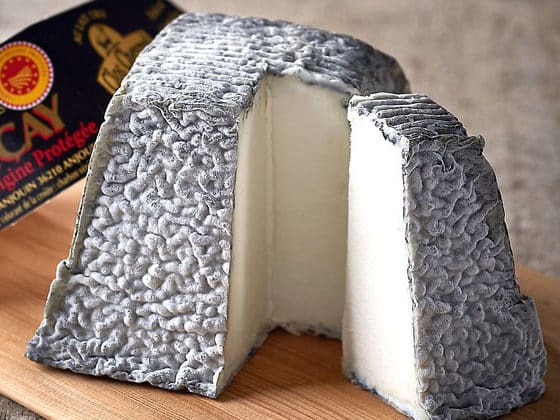
E.g. Valençay, Sainte Maure de Touraine, Rocamadour
There are a number of spectacular cheeses that fall under this category. Looking at France alone, you will find Sainte Maure de Touraine (log shape), Valençay (like a pyramid) and Rocamadour (in a round).
Those 3 examples are all proected by an AOP (Protected Designation of Origin) stamp and are matured for a minimum of 6 to 10 days. During this time, the cheese develops a wrinkly natural rind formed by a mould called Geotrichum candidum.
At this age, the flavour and aroma both start to become more complex. While the goaty tang and citric qualities are still present, some savoury (salty) and nutty notes start to appear. Of course, the flavour will vary depending on the cheese. For example, the taste of Valençay tends to be a little nutty and floral while Sainte Maure de Touraine is savoury and zesty.
Aged soft goat cheese with a rind
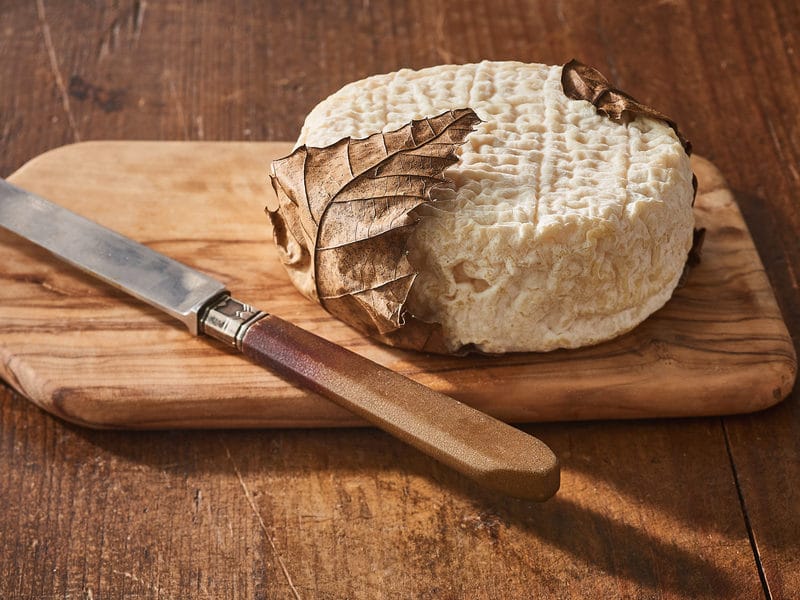
E.g. Mothais sur Feuille, Selles sur Cher, Chevrotin
At around 2-3 weeks of maturation, you will find a very different range of French goat’s milk cheeses. This includes the spectacular Mothais sur Feuille that is wrapped in a chestnut leaf and Chevrotin that is protected by an AOP stamp. Both examples are matured for a minimum of 3 weeks.
Goat’s milk cheeses that have been matured for more than 3 weeks tend to have a slightly firmer texture. Moreover, their flavour really starts to develop at this age. Gone are the goaty, citric notes from their childhood and adolescence. Whilst your palate will still detect lactic and savoury notes, a subtle sweetness starts to appear.
Furthermore, Mothais sur Feuille is matured at almost 100% humidity on wooden planks. This, coupled with the chestnut leaf, impart a certain earthy, woody quality to the cheese.
Aged pressed goat cheese
E.g. Tomme de Chèvre, Garrotxa, L’Amuse Brabander
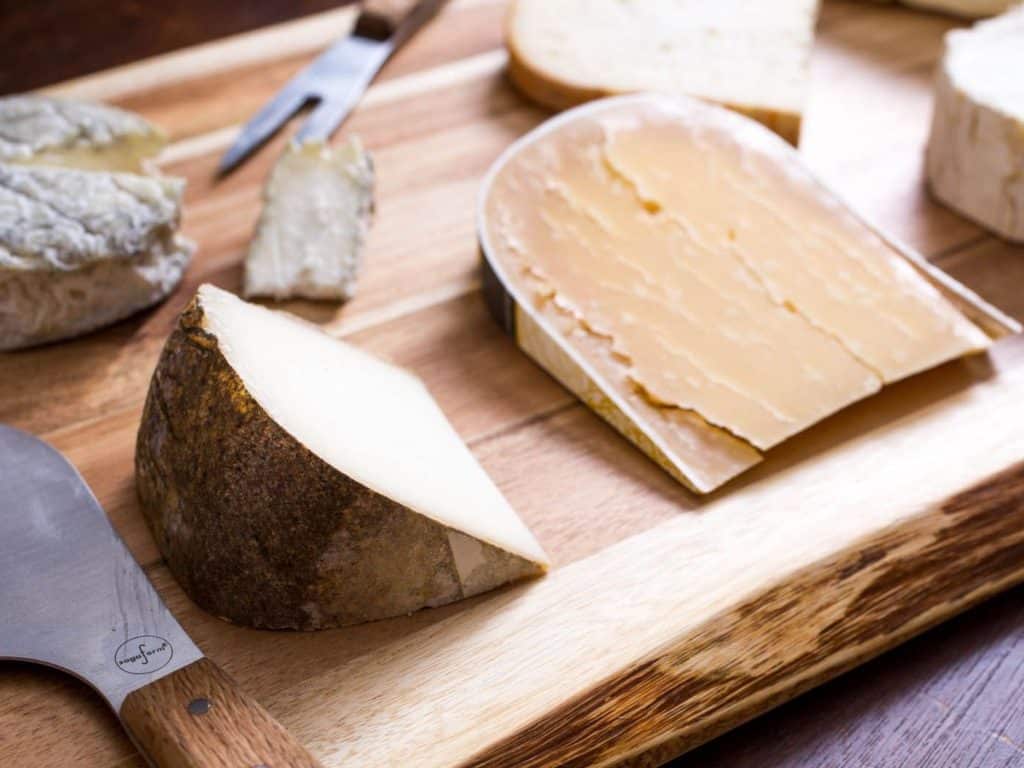
This is where things start to get really interesting. Goat’s milk cheeses, just like cow’s milk and sheep’s milk cheeses, can be matured for much longer durations than a couple of weeks.
Some spectacular examples include Tomme de Chèvre (minimum 7 weeks), Garrotxa (up to 6 months) and L’Amuse Brabander (24 months). The cheeses above are a celebration of the affineur’s work. Besides, their flavour is heavily influenced by their terroir (geographical location) and the period of maturation.
Expect fruity notes with the slightest touch of goaty tang with the Tomme de Chèvre (France) , herbs and nuts with the Garrotxa (Spain) and salted caramel and butterscotch with the Brabander (Netherlands).
Does goat cheese taste good?
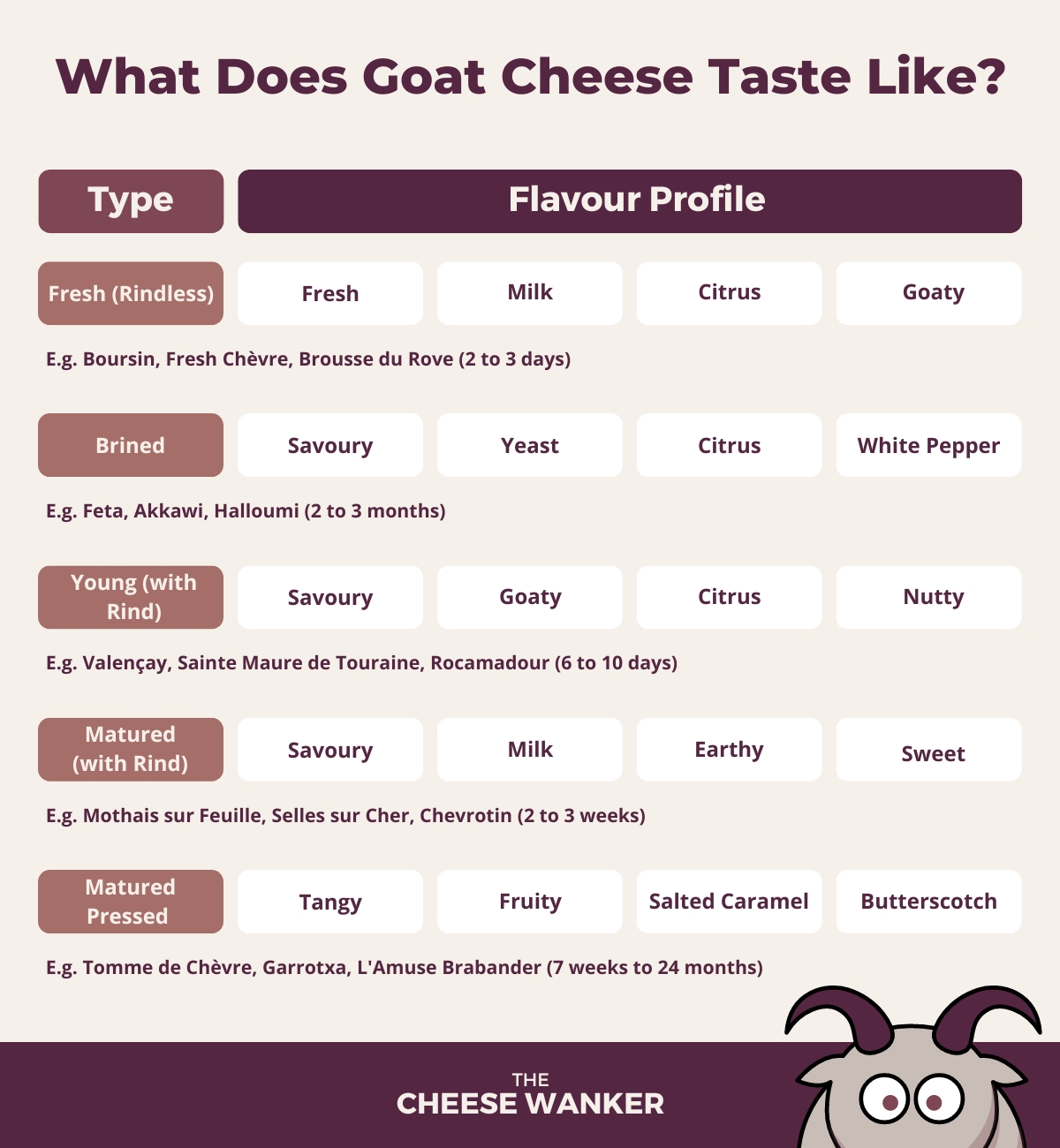
As you can see, the answer to “what does goat cheese taste like” is a very complex one. There are many factors that contribute to the flavour palette of any cheese and goat cheese is no exception to this rule.
Whilst the fatty acid composition of goat milk tends to impart a certain flavour to most goat cheeses, it would be an injustice to the craft of the farmers and cheesemakers to simply say that they all taste goaty. Be prepared for quite the sensory journey from acidic to yeasty and bourbon to sweet.
If you’ve never tried goat cheese before, I hope that I have convinced you to give it a try. Want to learn more about goat’s milk cheeses? Find out which ones are lactose free and safe in pregnancy. Already a fan? What’s your favourite goat’s milk cheese? Drop me a comment below.
